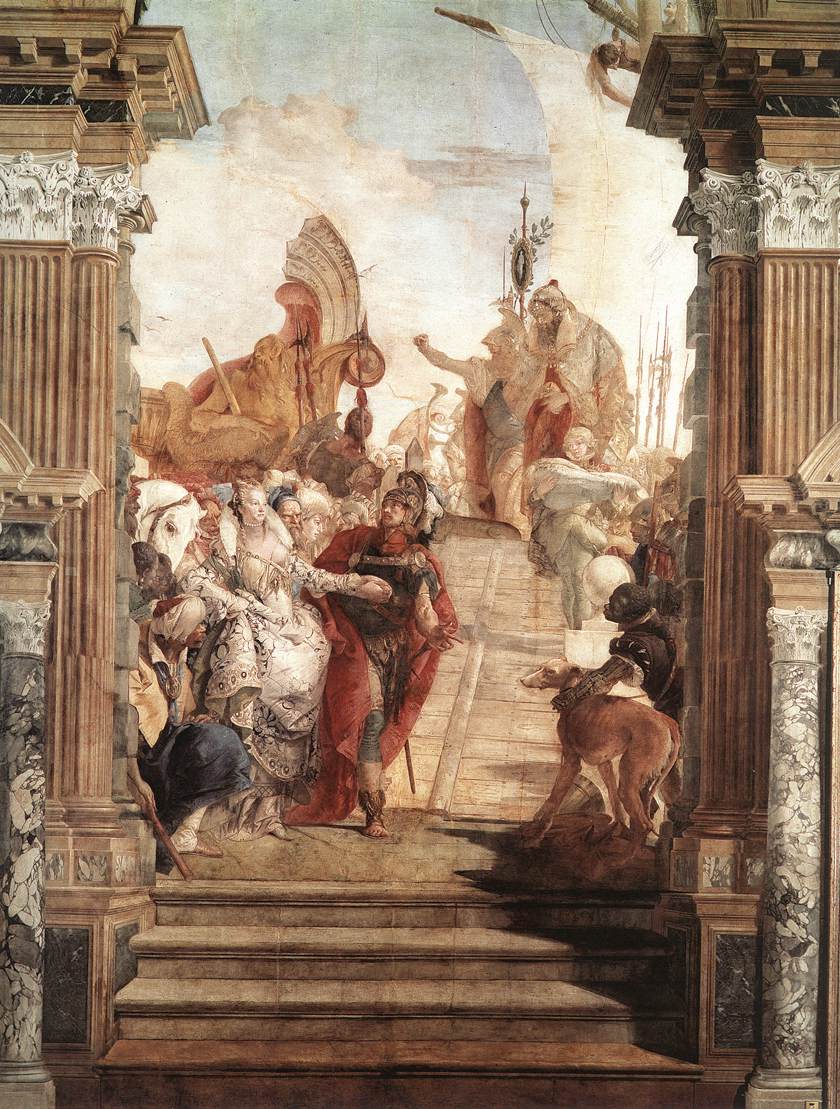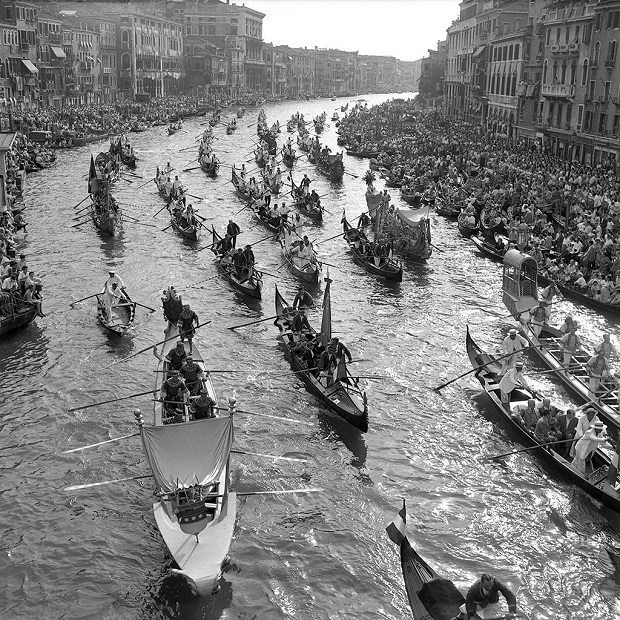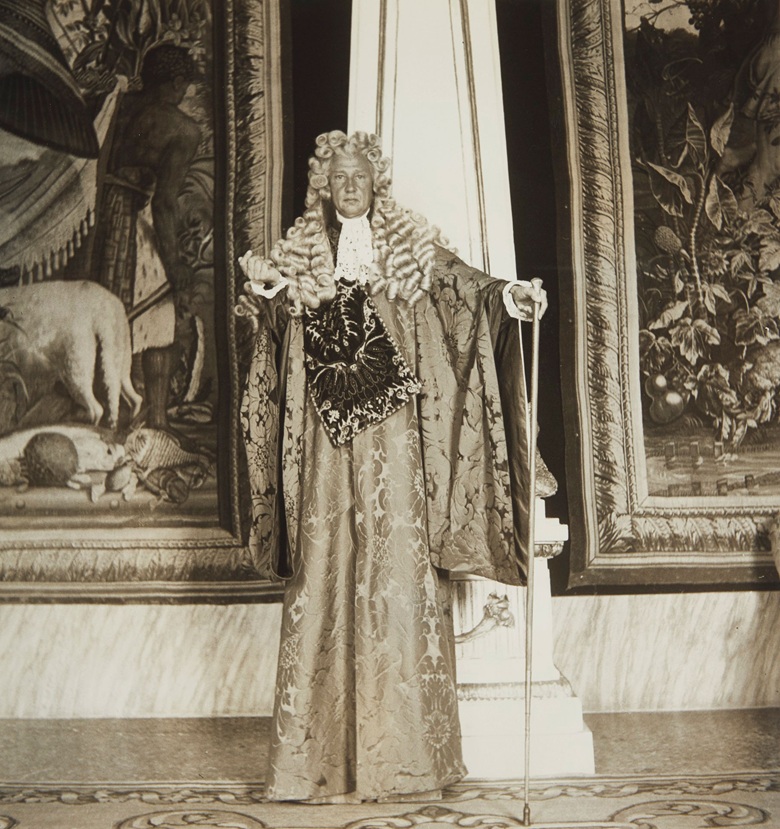Some of the other things I’ve always wanted to see in Venice are the Tiepolo frescoes in the Palazzo Labia. This is a large palazzo, just on the corner of the Cannaregio Canal, as it meets the Grand Canal, and next to the church of San Geremia.

The Palazzo Labia, seen from the Cannaregio Canal.
It was built for a very wealthy family of Spanish merchants at the end of the 17th century. They had ‘paid’ their way into Venetian aristocracy – providing a large amount of money for the Venetian state in return for having their family name entered into the famous Venetian Libro d’Oro. This ‘Golden Book’ was first begun in 1315, to list all the families represented on the Great Council of Venice in the years up to 1297 and to ensure that only representatives of these original and founding families of the city could be eligible for high office. Even if you later became very wealthy and influential within your profession or parish, you couldn’t work your way into the governing elite of the city without your name being in this book.
At least, that was the rule for many generations. By the 1600s it was apparent that the city was in financial difficulties and the never-to-be-adulterated aristocratic elite suddenly found that it was prudent to open the book once more and inscribe some new names, in return for suitably munificent payments, of course – usually starting at 100,000 ducats.
The Labia may have been able to pay their way into the book, but they weren’t allowed to build their palace right on the Grand Canal – this was a privilege strictly reserved for the oldest families. They got very near to it – the palace overlooks the quayside but is deliberately some yards from the water’s edge. However, they made up for this literal set-back by the magnificence of the palace that they created.
The main reason to visit Palazzo Labia is to see the frescoes created in the Banqueting Hall by Giambattista Tiepolo between 1746 – 47. These comprise his most important decorative scheme in Venice and show scenes from the story of Cleopatra and Mark Anthony. They are amazing!
The difficulty is that the Palazzo now belongs to the RAI Broadcasting Company, and so is not usually open to the public. I know that well-connected tour guides have ways of getting small groups in to see the frescoes, so this time I did some speculative emailing to see if I could arrange a visit. With great good luck my email eventually reached a charming gentleman within the RAI organisation who was happy to make an appointment for us to see the palace.
The grand rooms on the first floor of the palace are filled with splendid decorations and furnishings, including a set of Brussels tapestries from designs by Giulio Romano, frescoes of the signs of the zodiac and an exquisite mirrored room, with painted grisaille frescoes of statues, alternating with the mirrors around the room.
The Banqueting Hall, however, is breath-taking. The room is smaller than I expected, but rises to double height, and is filled with remarkable illusionistic architectural frescoes, devised and painted by Tiepolo’s collaborator, Girolamo Mengozzi Colonna. The real doors and windows of the room are all incorporated into the decorative scheme, so it is initially difficult to quite tell what is real and what is not.

The Banqueting Hall of then Palazzo Labia
Within this framework are Tiepolo’s opulent and delicate images of Queen Cleopatra as she meets the Roman hero Mark Anthony for the first time and then stages a magnificent banquet in his honour. This was a subject that Tiepolo explored on numerous occasions, with various sketches and paintings that worked out and refined the two main compositions.
On the west wall we see the princely couple, Mark Anthony leading Cleopatra by the hand from the gangplank of his vessel, down the painted steps into the room in which we are standing. She hangs back slightly, appraising him, seemingly moving with a queenly dignity that may have a good deal to do with the profusion of rich silks and damask in the skirts she gathers up in her right hand. A press of onlookers gather behind the couple, including one of Tiepolo’s characteristic white horses, edging himself into the picture space.

‘The Meeting of Cleopatra and Mark Anthony’, by Giambattista Tiepolo
On the other side of the room we have the subsequent banquet, in which Cleopatra is determined to out-do the hospitality of Anthony. At a table set in a loggia, with musicians on the balcony above, the stately queen calls for a glass of vinegar, into which she drops one of the priceless pearls she has been wearing – and then drinks the dissolved remains. No other banquet could provide such rare and precious fare! Around both scenes are a multitude of watching figures, from the Queen’s dwarf and Anthony’s adjutant to turbaned Turks, Nubian servants, maids, attendants and numerous dogs. Above, the ceiling of the room opens up, with a painting of Bellerophon, riding on the winged horse, Pegasus.

‘The Banquet of Cleopatra’, by Giambattista Tiepolo. Cleopatra drops a pearl into a glass of vinegar – and drinks it.
The rich colours, now slightly faded, and the ‘sketchy’ way in which Tiepolo paints, give the whole interior an immediacy – despite the rational architectural framework. There is a feeling that you are just seeing these figures for a moment, before they disappear into another room and another part of their story. The characterful figures who support the royal pair – peering, watching, reacting to their every move – are so brilliantly rendered that you can imagine whole back-stories for them. You can’t help but feel that these are portraits, whether of Tiepolo’s friends and neighbours, or members of the palace staff.
These wonderful images were created to celebrate the wedding of a member of the Labia family in the mid-1740s – and what a party that must have been! But the glories of the Venetian State were rapidly approaching their end and after the fall of the Republic in 1797, the Labia family left Venice and their Palazzo and it fell into a long decline.
New hope came in 1948, when the Palazzo Labia was bought by the French-born, Spanish multi-millionaire Charles de Beistegui. Heir to an immense fortune, this Eton-educated art collector and interior decorator was famous for his outlandish style and incredible parties. (During the 1930s he apparently had a penthouse flat on the Champs Élysées, designed by Le Corbusier, which included an electronically operated hedge which parted to reveal a view of the Arc du Triomphe).
After a rapid restoration, Beistegui gave a grand costume ball at the Palazzo Labia in September 1951, which he dubbed, ‘La Bal Oriental’ and which has been known subsequently as ‘The Ball of the Century’.

Crowds along the Grand Canal watch the guests arrive for ‘The Ball of the Century’ in 1951.
It was the last great event of its kind, with the Grand Canal crowded with spectators to see the arrival of the stunning parade of celebrities, movie-stars, princesses and millionaires who had clamoured for places on the guest-list. Christian Dior and Salvador Dali made each other’s costumes. Young designers Pierre Cardin and Nina Ricci made their names by designing many of the other costumes. Cecil Beaton took the photographs. Beistegui himself wore a huge full-bottomed periwig and the dress of an eighteenth century Venetian Senator, including 16-inch high platform shoes, which raised the diminutive 5-foot 3-inch Maecenas to a towering 6-foot seven!

Charles de Beistegui in his costume for his 1951 Ball (complete with 16 inch stilts).
Standing in the midst of the Tiepolo’s in the Labia’s Banqueting Hall, it’s easy to imagine this as a fitting setting for such a hedonistic and over-the-top party, but looking at Cleopatra – about to drop that pearl into her glass – you can’t help feeling that she must have regarded it all as a bit plebeian. Some of the guests may have copied her costume, or the abundance of her pearls, but few could have quite managed that hauteur and grandeur as she swept out on the arm of Mark Anthony.
(And a special thank-you to RAI for letting us have a tour of the Palazzo Labia!)
